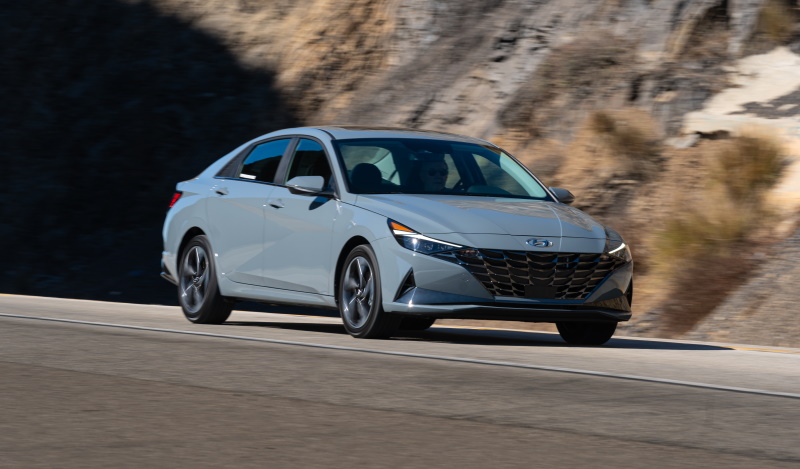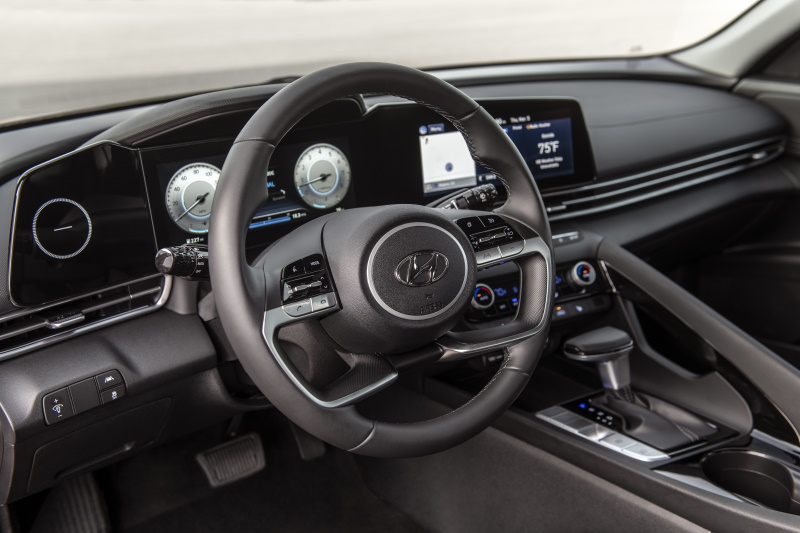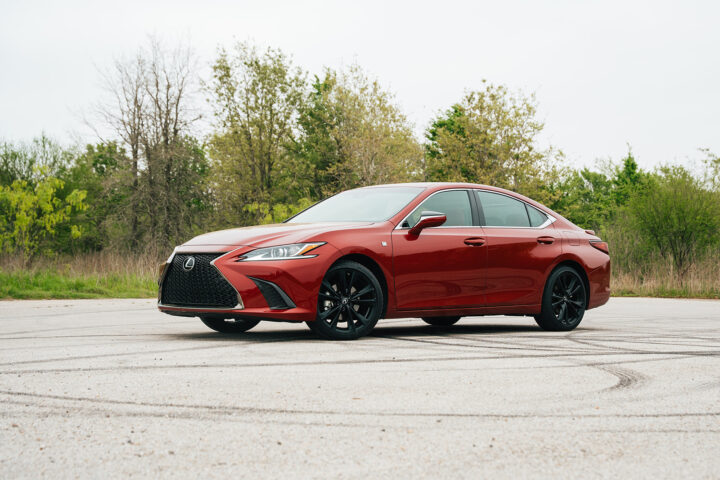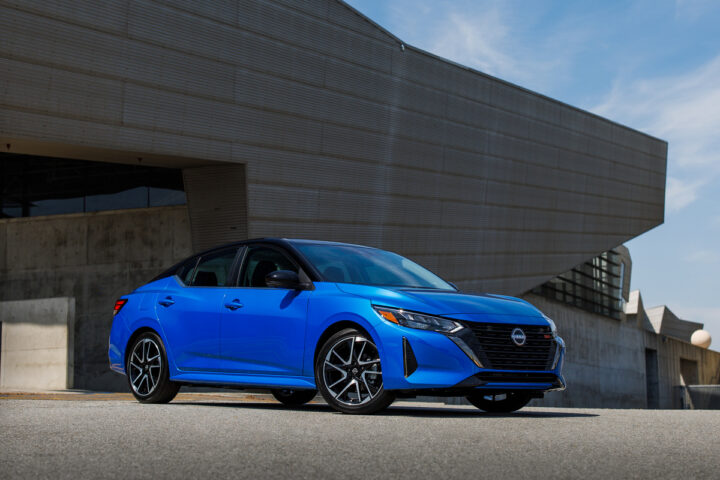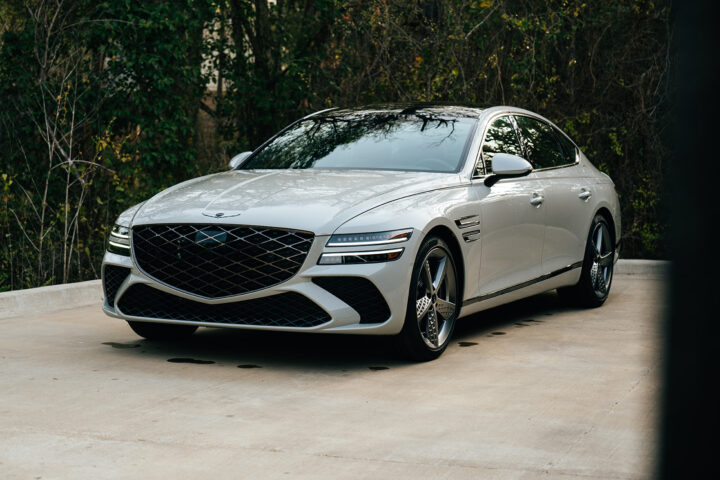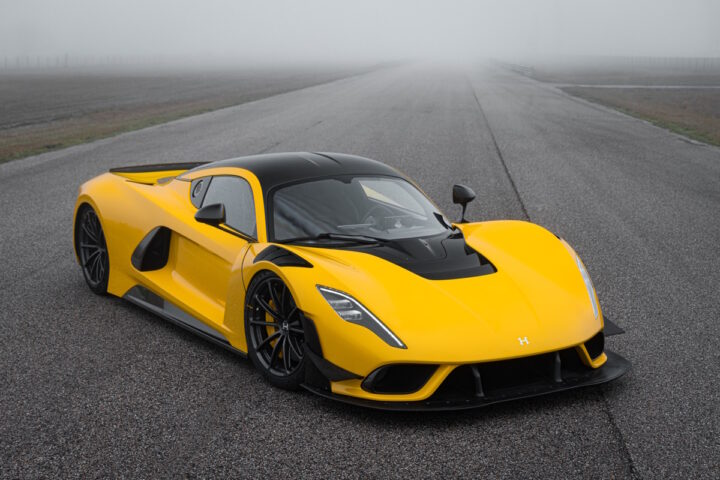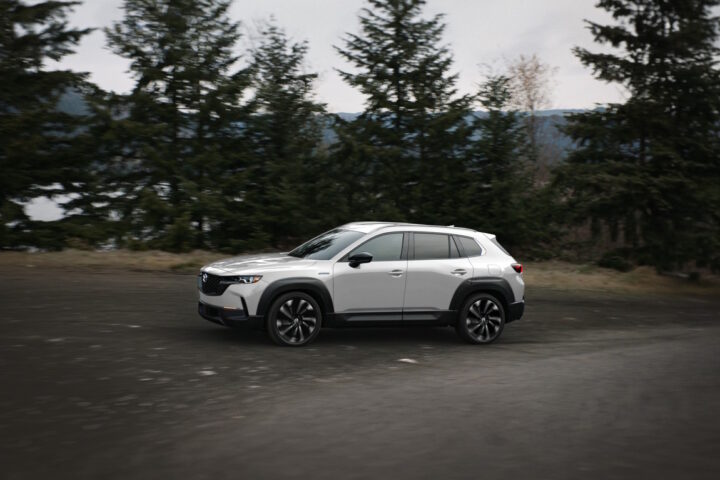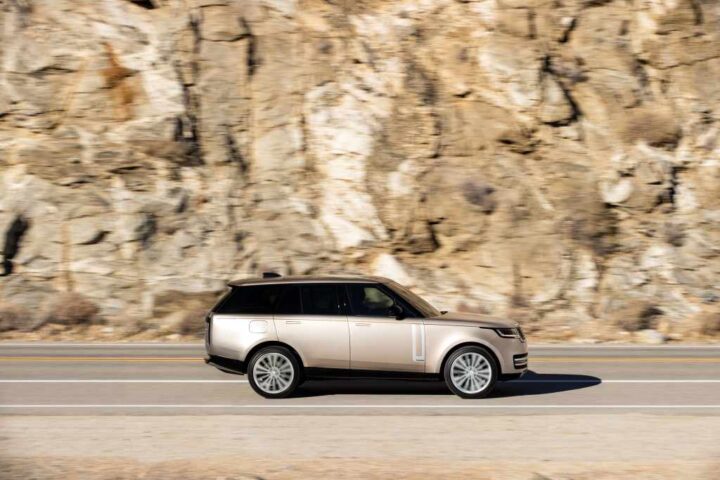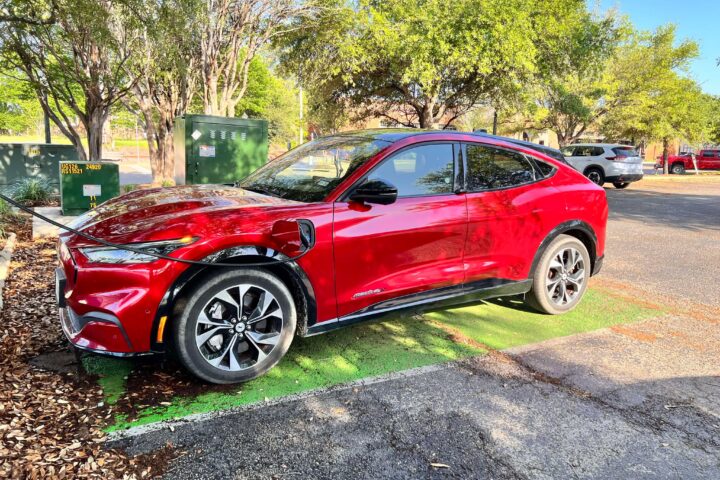Although automakers are deluging the market with SUVs, there’s still a place for subcompact sedans. These are still created for fuel economy, but they have to have some good tech. You’ll find lots of updated interiors, bold exteriors, and features such as blind-spot monitoring and adaptive cruise control. One of the more updated vehicles is the Hyundai Elantra. In the past, this was a lower-tier subcompact, but Hyundai has updated it. This week, I tested the Hyundai Elantra Limited. Its styling and interior have vastly improved from the last generation but one question remained: how does the Elantra stack up against the Toyota Corolla and Honda Civic?
Let’s take a look at the exterior, starting at the front. You’ll see a large black grille along with a big Hyundai badge. There are some nicely sculpted headlights along with some black fake vents. This car has Electric Shadow paint with 17-inch multi-spoke silver and black wheels. I think it was a great color combination. The silhouette of the Elantra tapers down to the trunk. There is a nice design feature at the rear, which is a black piece of trim that extends to the rear window, giving it more depth. The rearend has the most angles and designs on the Elantra. You’ll see a full-length light bar along with some jagged headlights and some disappointing fake exhausts. ELANTRA is written large on the trunk, along with the Hyundai logo and a Limited badge. I like Hyundai’s bold designs, especially with the Elantra.
Time to get into the Elantra. Inside, you get a melange of greys making up most of the interior surfaces. In front of the driver, you have a nicely weighted Hyundai steering wheel with buttons for the infotainment system and adaptive cruise control. There are two screens. The first is for the digital dials along with a display to show your trip computer, speed, and other functions. The left is an odd piece of design. It looks like a slatted circle with a little line in the middle of it. Hyundai always has good infotainment systems, and this is no exception! The top-of-the-line Limited trim comes fully loaded and it has Apple CarPlay, Android Auto, and navigation. Elantra’s navigation system doesn’t look bad but I would rather use my phone’s system.
Below the infotainment system are shortcut buttons for your map radio and media. I always appreciate the usage of buttons and knobs for their climate control which. While driving, using these was simple. At the very bottom of the center stack are two USB ports along with a button for the drive mode, a button to activate the rear-view camera, and a park/hold button. Elantras start out in the low $20,000s, and you can feel that this is a slightly inexpensive feeling interior. At the rear, because the Elantra has a sloping rear end, there is a slight impediment in headroom. You’ll also see that there are no vents or USBs in the rear. This is an attractive cabin with some comfortable heated seats
Under the hood is a 2.0-liter naturally aspirated inline-four producing 147 horsepower/110 kW and 132 lb-ft/179 Nm. With front-wheel drive and CVT transmission, the Hyundai Elantra gets from 0 to 60 miles an hour in 8.1 seconds. Since this is naturally aspirated, there isn’t the most amount of power lowdown. Elantras feel slow, but it can keep up with traffic. Three different drive modes include normal, sport, and smart. I would always keep it smart because it could determine if I needed more power or if I could maximize fuel efficiency. Although I don’t like CVTs, this one did well pretending like it was a real transmission. Along the road, Elantra is pretty easy to use and the suspension is compliant enough. You will feel bumps, but they are not very jarring. When I needed to accelerate hard, the smart mode would shift into the sport for maximum power.
In mixed driving, the Elantra returned 33 MPG. That’s on par with its competitors such as the Toyota Corolla and Honda Civic. Some more numbers include pricing. Elantra starts at around $23,000, but the Limited I tested was $27,000. For that amount of money, you get heated seats, a full safety suite, a sunroof, and digital dials. I’m not sure if I would go with the Limited since the SEL comes in $4,000 less with about the same features. When you choose the SEL and $2,000 Convenience Package, you still come in around $24,500.
How does it stand up to the competition? The king of interior materials and driving dynamics is the Mazda3, but its infotainment system is quite small. Honda and Toyota both make more traditional-looking subcompact cars which could look borderline boring. Although I appreciate that Hyundai makes bold-looking cars, the Elantra is bold to the point of being almost controversial. I understand if consumers skip it because of the rearend. When they get past that, it has a handsome interior with a lot of technology for a good amount of money. If you’re looking for a stylish subcompact with plenty of tech, take a look at the Hyundai Elantra.

